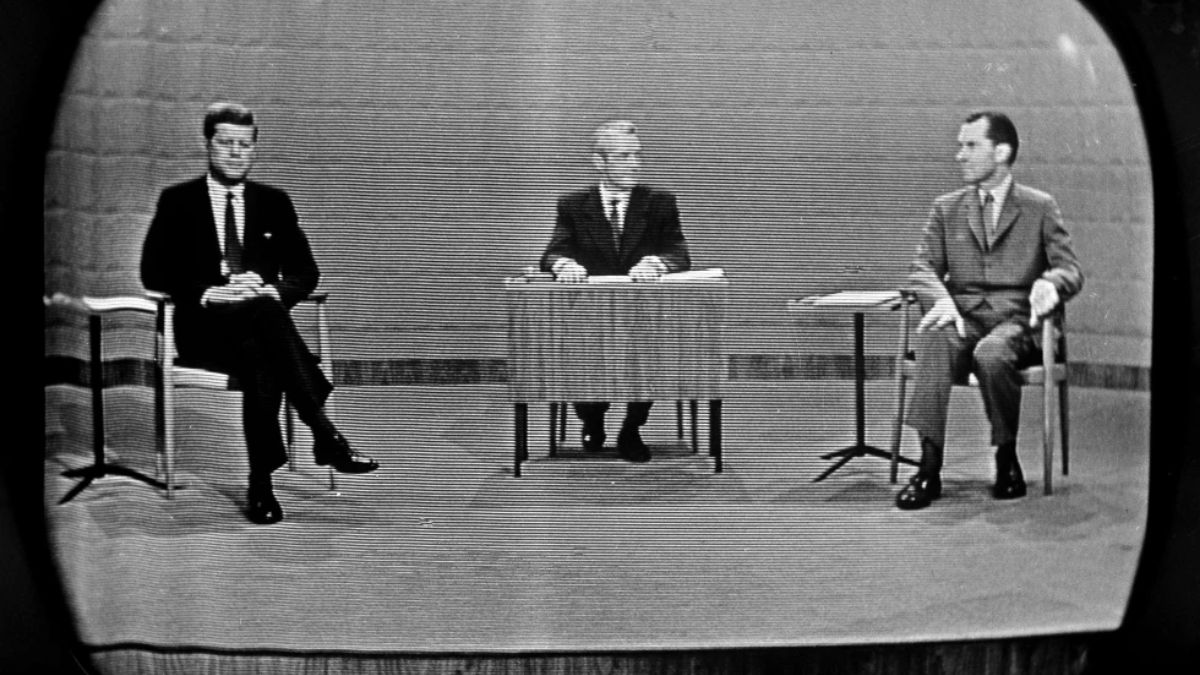The presidential debate has the power to determine the outcome of the election in the United States. Who can forget the controversial debate between Donald Trump and Joe Biden in 2024 ahead of the 2024 presidential elections? The same debate which sealed the democratic candidate’s fate from heading the top office forever.
The first televised presidential debate took place on September 26, 1960, between Senator John F Kennedy and Vice President Richard Nixon. This was the first time that Americans could see and hear the candidates simultaneously, rather than relying solely on print or radio coverage.
If you are a history geek who loves to learn about important events from the past, Firstpost Explainers’ ongoing series, History Today will be your one-stop destination to explore key events.
On this day in 1959, Typhoon Vera, also known as the Isewan Typhoon, made landfall in Japan, leaving a massive trail of destruction behind.
Here is all that happened on this day.
First televised US presidential debate
The United States witnessed a historic political event on September 26, 1960 - the first-ever televised presidential debate between Senator John F Kennedy and Vice President Richard Nixon. Held at Wolstein Centre in Ohio’s Cleveland, this debate would forever transform American politics by demonstrating the growing power of television in shaping public perception.
The debate was part of the 1960 presidential campaign, in which Kennedy, who was the youthful Democratic nominee, faced the experienced Republican incumbent Nixon. This was the first time that millions of Americans could see and hear the candidates simultaneously, rather than relying solely on print or radio coverage. Roughly 70 million viewers tuned in, making it one of the most-watched events in US history at that time.
Kennedy appeared calm, confident, and telegenic, wearing a dark suit and projecting a strong presence. Nixon, on the other hand, looked pale and underweight, partly due to a recent hospitalisation. He perspired heavily under the studio lights. While both candidates presented solid policy arguments on topics such as the Cold War, the economy, and civil rights, Kennedy’s composed demeanour resonated with television viewers, whereas radio listeners reportedly thought Nixon performed equally well.
The debate marked a turning point in political campaigning, highlighting the importance of image, presentation, and media strategy. Kennedy’s success on television helped him gain momentum in a tight race, demonstrating that personal appearance and charisma could be as influential as policy positions.
Typhoon Vera hit Japan
One of the deadliest and most powerful typhoons in Japanese history made landfall in Japan on this day in 1959. Also known as Isewan Typhoon, this natural calamity claimed more than 5,000 lives.
Vera, classified as a super typhoon, struck the Ise Bay region with winds exceeding 190 km/h (120 mph) and a devastating storm surge. The combination of high winds and surging waters overwhelmed coastal defences, flooding vast areas which included industrial zones, farmlands, and residential neighbourhoods. Cities like Nagoya, a major industrial hub, were particularly hard-hit, with homes and factories destroyed.
The typhoon’s impact was catastrophic. Official reports confirmed over 5,000 deaths, with thousands more injured and displaced. Entire villages were submerged, and hundreds of thousands of people lost their homes. Infrastructure was severely damaged, disrupting transportation and emergency response efforts. Agricultural losses were immense, affecting rice paddies, crops, and livestock.
In the wake of the disaster, the Japanese government launched a massive rescue and relief operation. Soldiers, police, and volunteers worked tirelessly to evacuate survivors, provide medical care, and distribute food and clean water. The scale of destruction prompted nationwide efforts to improve disaster preparedness, including strengthened levees, better early warning systems, and stricter building codes to mitigate future typhoon impacts.
This Day, That Year
The Beatles released Abbey Road, their last-recorded album, in 1969.
The Holy Alliance of Russia, Austria, and Prussia was formed after the final defeat of Napoleon in 1815.
With inputs from agencies
)